I have reproduced below several before and after photos of labiaplasty/hood reduction procedures performed by both linear and wedge techniques, with explanations about each one. You can begin to get an idea why it is important for your surgeon to be both an architect and an artist, to be savvy in alternative techniques, and to be able to design the procedure to specifically fit your anatomy.
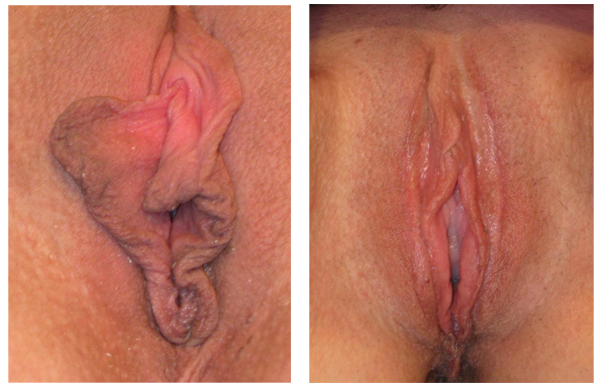
I chose a Y modification of a V-wedge here as the best way to modify her quite large prepuce folds. The prominent posterior commissure at the bottom was modified by a separate U-shaped incision below her labial re-anastamosis. (This patient also had a labiaplasty of her outer labia majora…)

I designed a linear here, as the patient wished to lose the thickened tips, and her anatomy supported a simple, one-line linear resection.
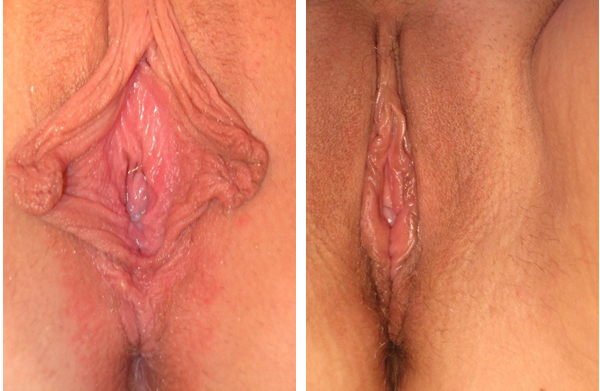
This woman wished to be as petite as I could safely make her, and her redundant labia descended down from several stretchable folds of lateral central hood, so a modified linear resection was designed to take advantage of the anatomy of her folds.

No way this woman’s anatomy was going to support a linear resection, so a specialized Y modification of V-wedge was designed to minimize both lip and hood size.
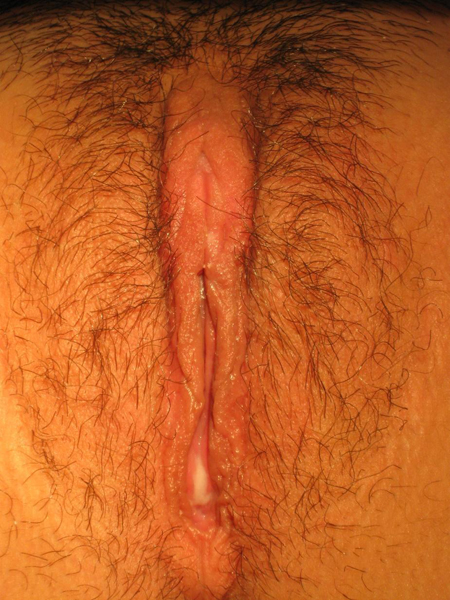
This post-op is at 1 month.
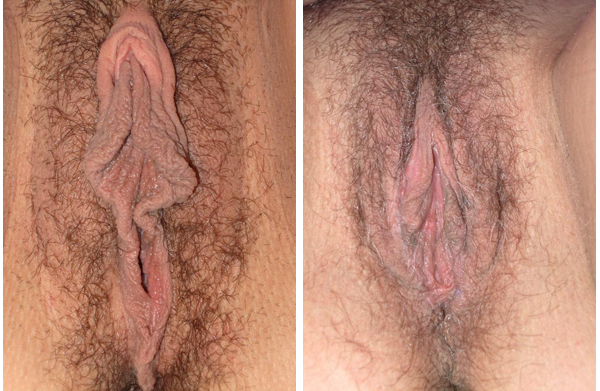
You can see that a simple linear resection would never work here. This 18 year-old college student wished to not be too small, to be as natural looking as possible, and to decompress both the fluffy hood and lower labia. A double-winged Y modification of V-wedge was designed for her to “curtain” the vagina, and to make her labia smaller, but to comply with her wishes for “…not too much off!”
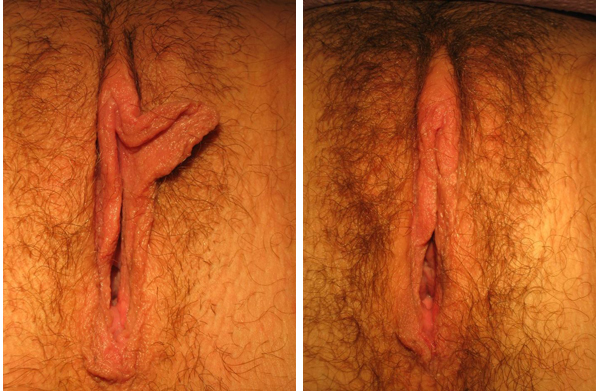
A carefully designed curvilinear resection was perfect for this woman who desired her hypertrophic left labum to as much as possible match the right side.

